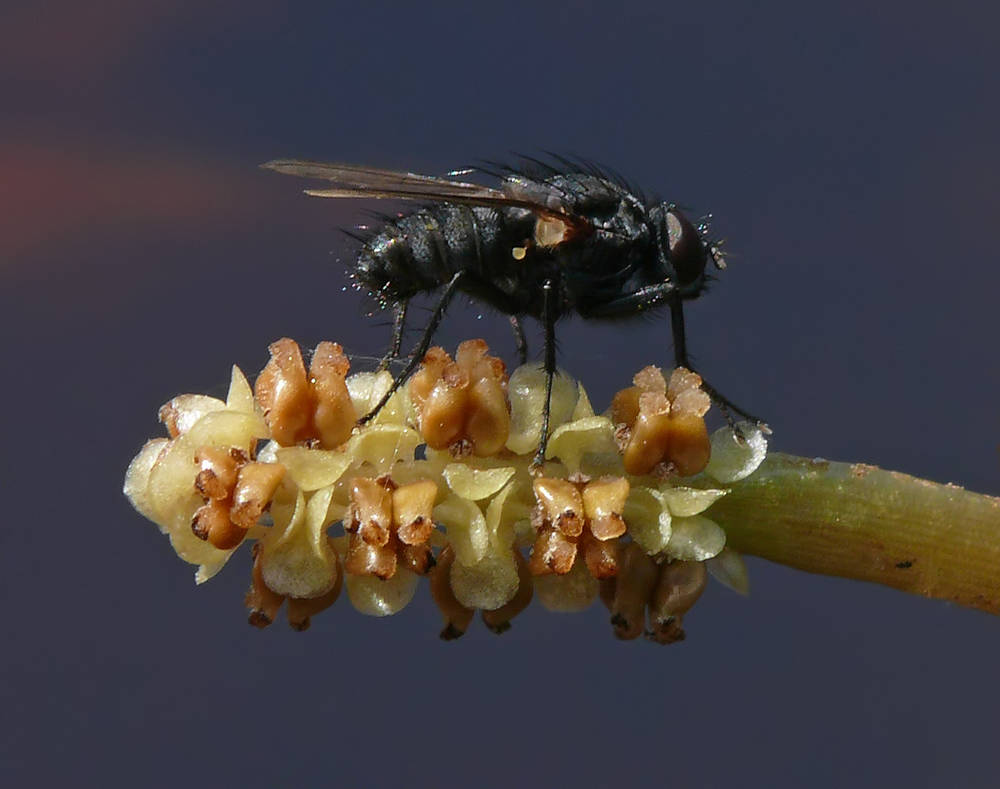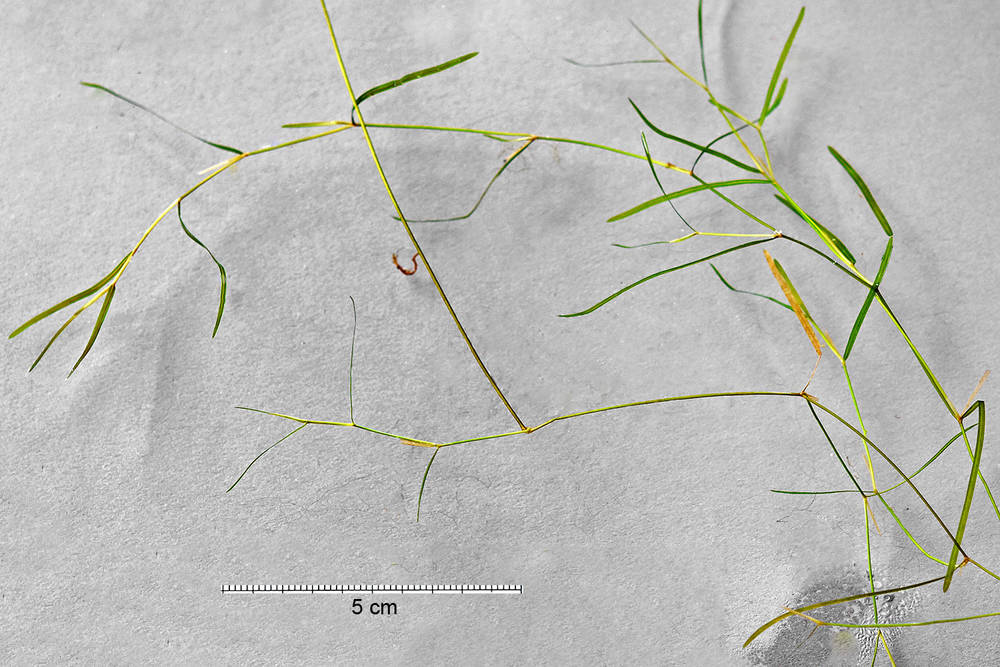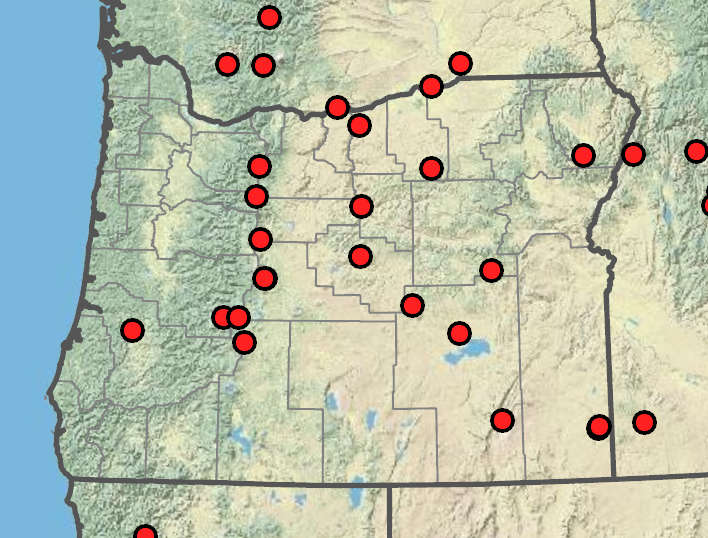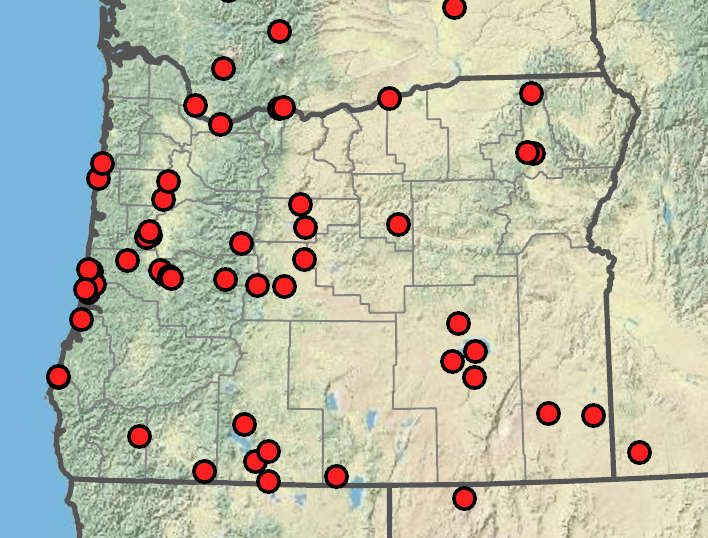Potamogeton alpinus
Potamogeton pusillus
northern pondweed, reddish pondweed
small pondweed
terete; to 200 cm; nodal glands absent.
terete to slightly compressed, 18– 150 cm; nodal glands present on at least some nodes; to 0.5 mm diameter, green; gold, brown, or rarely white.
submersed and floating or submersed only.
submersed, attached to stem nodes, not attached to stipules;
stipules connate, 3.1–9.2 mm, rarely fibrous;
tip obtuse;
blades linear, 14–65 × 0.5–1.9 mm;
base slightly tapering;
margins entire;
tip acute or rarely apiculate, rarely with a bristle; lacunae in 0–2 rows on each side of midrib;
veins 1–3.
elliptic or oblanceolate to obovate or oblonglinear, 40–70(100) × 10–25(40)mm; reddish green;
base gradually tapering to petiole;
tip obtuse or acute;
veins (7)9–13(15);
petioles 0–12 mm.
sessile, attached to stem nodes, not attached to stipules;
stipules (12)15–25(40)mm;
tip blunt;
blades oblong-linear to linear-lanceolate, 45–180(250) × 5–20 mm;
base rounded to cuneate;
margins entire;
tip obtuse or acute; lacunae in 0–6 rows on each side of midvein;
veins 7–9.
emersed;
spikes cylindric, 10–35 mm;
peduncles terminal or axillary; erect, 30– 100(160)mm.
submersed or emersed;
spikes cylindric, interrupted, 1.5–10.1 mm;
peduncles 1–3 per plant; axillary or terminal, filiform to cylindric; erect, rarely recurved, 5–66 mm.
pedicellate, obovoid; turgid; (2.5)3–3.5 × (1.7)2–2.4 mm, dorsally keeled, laterally keeled or not;
beaks dorsally curved, 0.5–0.9 mm.
sessile, obovoid;
sides centrally concave, 1.5–2.2 × 1.2– 1.6 mm, green to brown, not keeled;
beaks erect, displaced ventrally or rarely at middle of fruit tip, 0.1–0.6 mm.
Potamogeton alpinus
Potamogeton pusillus
Ponds, lakes, and slow-moving streams. 1200–2200m. BR, BW, Casc. CA, ID, NV, WA; north to British Columbia, east to Greenland; Eurasia. Native.
Potamogeton alpinus is often red when fresh. This species hybridizes with P. nodosus, P. gramineus, and P. praelongus.
Streams, lakes, marshes. 0–1600 m. BR, BW, Casc, CR, ECas, Est, Lava, Sisk, WV. CA, ID, NV, WA; north to Northwest Territories, east to CT, southeast to AZ and FL, South America; Africa, Eurasia. Native.
Immature plants usually cannot be distinguished from P. foliosus or P. berchtoldii.
Nick Otting, Richard Brainerd, Barbara Wilson
Nick Otting, Richard Brainerd, Barbara Wilson
- Local floras:
BC,
CA,
OR,
WA
- Local Web sites:
CalFlora,
CalPhotos,
Flora NW,
PNW Herbaria
WildflowerSearch
iNaturalist (observations)
USDA Plants Database
- LBJ Wildflower Center
- SEINet
- Plants of the World Online
- Encyclopedia of Life
- Wikipedia
- Google Image Search
- Local floras:
BC,
CA,
OR,
WA
- Local Web sites:
CalFlora,
CalPhotos,
Flora NW,
PNW Herbaria
WildflowerSearch
iNaturalist (observations)
USDA Plants Database
- LBJ Wildflower Center
- SEINet
- Plants of the World Online
- Encyclopedia of Life
- Wikipedia
- Google Image Search





